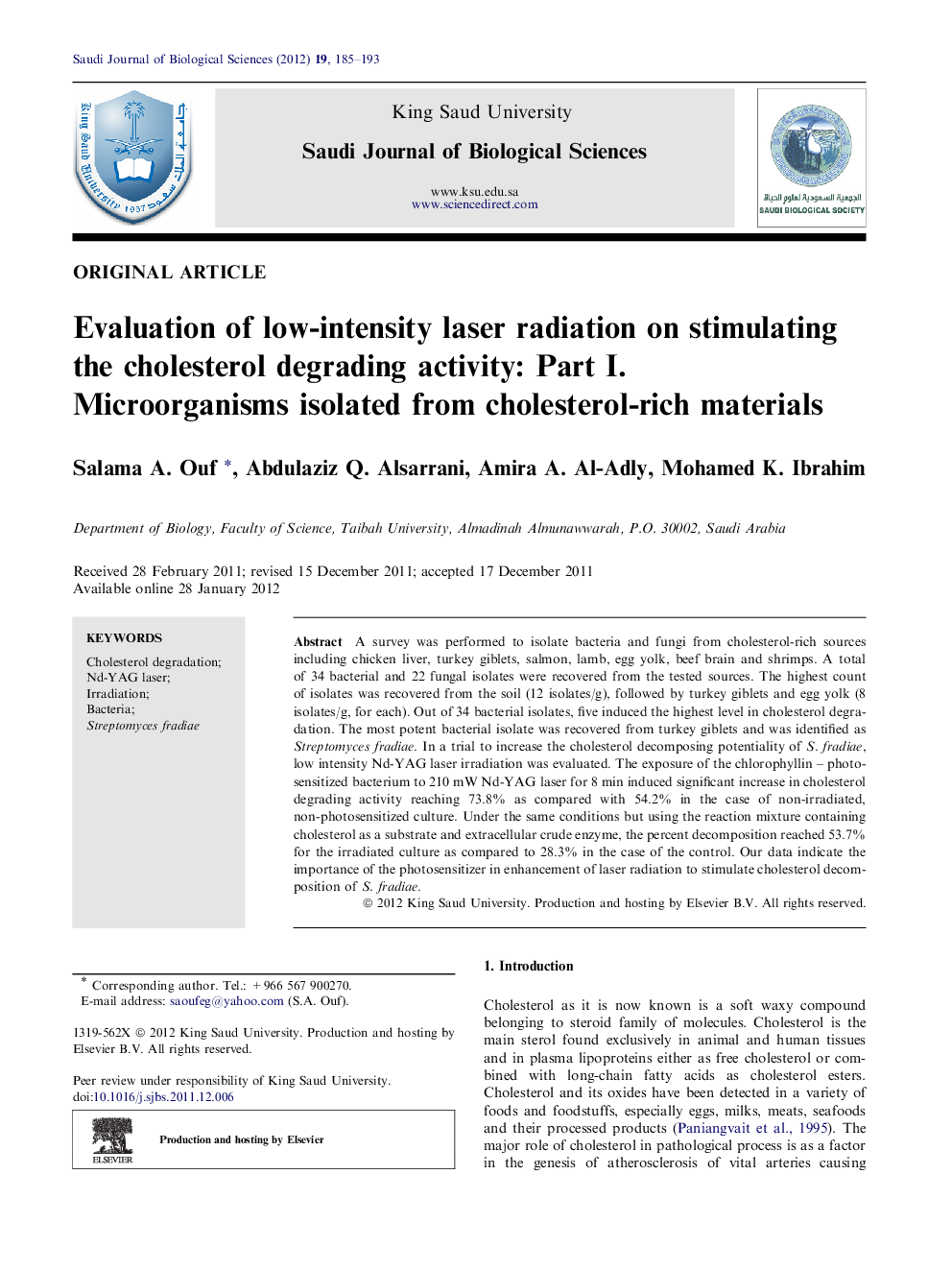| Article ID | Journal | Published Year | Pages | File Type |
|---|---|---|---|---|
| 4406706 | Saudi Journal of Biological Sciences | 2012 | 9 Pages |
A survey was performed to isolate bacteria and fungi from cholesterol-rich sources including chicken liver, turkey giblets, salmon, lamb, egg yolk, beef brain and shrimps. A total of 34 bacterial and 22 fungal isolates were recovered from the tested sources. The highest count of isolates was recovered from the soil (12 isolates/g), followed by turkey giblets and egg yolk (8 isolates/g, for each). Out of 34 bacterial isolates, five induced the highest level in cholesterol degradation. The most potent bacterial isolate was recovered from turkey giblets and was identified as Streptomyces fradiae. In a trial to increase the cholesterol decomposing potentiality of S. fradiae, low intensity Nd-YAG laser irradiation was evaluated. The exposure of the chlorophyllin – photosensitized bacterium to 210 mW Nd-YAG laser for 8 min induced significant increase in cholesterol degrading activity reaching 73.8% as compared with 54.2% in the case of non-irradiated, non-photosensitized culture. Under the same conditions but using the reaction mixture containing cholesterol as a substrate and extracellular crude enzyme, the percent decomposition reached 53.7% for the irradiated culture as compared to 28.3% in the case of the control. Our data indicate the importance of the photosensitizer in enhancement of laser radiation to stimulate cholesterol decomposition of S. fradiae.
